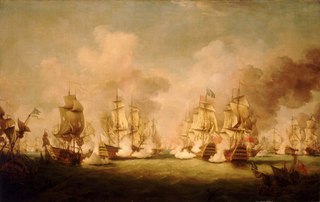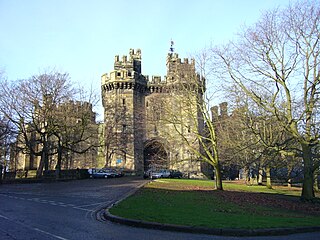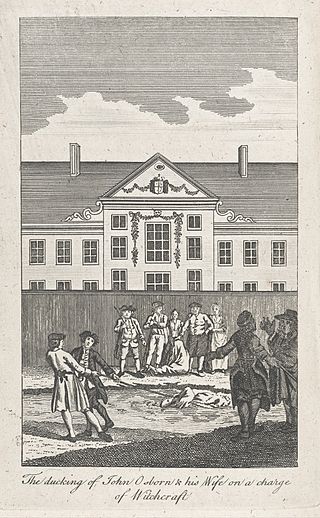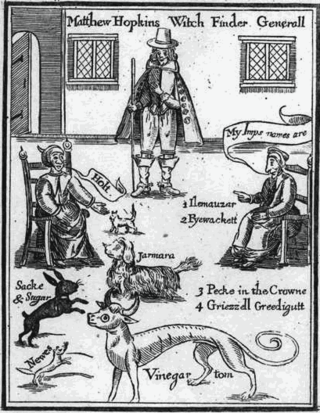
Witchcraft traditionally means the use of magic or supernatural powers to harm others. A practitioner is a witch. In medieval and early modern Europe, where the term originated, accused witches were usually women who were believed to have used malevolent magic against their own community, and often to have communed with evil beings. It was thought witchcraft could be thwarted by protective magic or counter-magic, which could be provided by cunning folk or folk healers. Suspected witches were also intimidated, banished, attacked or killed. Often they would be formally prosecuted and punished, if found guilty or simply believed to be guilty. European witch-hunts and witch trials in the early modern period led to tens of thousands of executions. In some regions, many of those accused of witchcraft were folk healers or midwives. European belief in witchcraft gradually dwindled during and after the Age of Enlightenment.

1692 (MDCXCII) was a leap year starting on Tuesday of the Gregorian calendar and a leap year starting on Friday of the Julian calendar, the 1692nd year of the Common Era (CE) and Anno Domini (AD) designations, the 692nd year of the 2nd millennium, the 92nd year of the 17th century, and the 3rd year of the 1690s decade. As of the start of 1692, the Gregorian calendar was 10 days ahead of the Julian calendar, which remained in localized use until 1923.

A witch-hunt, or a witch purge, is a search for people who have been labeled witches or a search for evidence of witchcraft. The classical period of witch-hunts in Early Modern Europe and Colonial America took place in the Early Modern period or about 1450 to 1750, spanning the upheavals of the Reformation and the Thirty Years' War, resulting in an estimated 35,000 to 50,000 executions. The last executions of people convicted as witches in Europe took place in the 18th century. In other regions, like Africa and Asia, contemporary witch-hunts have been reported from sub-Saharan Africa and Papua New Guinea, and official legislation against witchcraft is still found in Saudi Arabia and Cameroon today.

The Crucible is a 1953 play by American playwright Arthur Miller. It is a dramatized and partially fictionalized story of the Salem witch trials that took place in the Massachusetts Bay Colony during 1692–93. Miller wrote the play as an allegory for McCarthyism, when the United States government persecuted people accused of being communists. Miller was questioned by the House of Representatives' Committee on Un-American Activities in 1956 and convicted of contempt of Congress for refusing to identify others present at meetings he had attended.

The Salem witch trials were a series of hearings and prosecutions of people accused of witchcraft in colonial Massachusetts between February 1692 and May 1693. More than 200 people were accused. Thirty people were found guilty, 19 of whom were executed by hanging. One other man, Giles Corey, was pressed to death after refusing to enter a plea, and at least five people died in jail.

Tituba Indian was an enslaved woman who was one of the first to be accused of witchcraft during the Salem witch trials of 1692-1693. She was brought to colonial Massachusetts from Barbados by Samuel Parris, the minister of Salem Village. She was pivotal in the trials because she confessed to witchcraft when examined by the authorities, giving credence to the accusations. She accused the two other women, Sarah Good and Sarah Osborne, of the same crime. She was imprisoned for over a year but never went to trial. It is unknown what happened to her after the case against her was dismissed by a grand jury in May 1693.
Sarah Osborne (also variously spelled Osbourne, Osburne, or Osborn; née Warren, formerly Prince, was a colonist in the Massachusetts Bay colony and one of the first women to be accused of witchcraft in the Salem witch trials of 1692. Sarah Osborn was suggested to be a witch by Sarah Good. Sarah Good said she had been tormenting the girls.

Ann Pudeator was a wealthy septuagenarian widow who was accused of and convicted of witchcraft in the Salem witch trials in colonial Massachusetts. She was executed by hanging.
This timeline of the Salem witch trials is a quick overview of the events.
Witch trials in the early modern period saw that between 1400 to 1782, around 40,000 to 60,000 were killed due to suspicion that they were practicing witchcraft. These trials occurred primarily in Europe, and were particularly severe in some parts of the Holy Roman Empire. Some witch hunts would last for years, and some sources estimate 100,000 trials occurred. Groundwork on the concept of witchcraft was developed by Christian theologians as early as the 13th century. However, prosecutions for the practice of witchcraft would only reach a highpoint from 1560 to 1630 during the Counter-Reformation and the European wars of religion, with some regions burning those who were convicted at the stake, of whom roughly 80% were women,, mostly over the age of 40.

The trials of the Pendle witches in 1612 are among the most famous witch trials in English history, and some of the best recorded of the 17th century. The twelve accused lived in the area surrounding Pendle Hill in Lancashire, and were charged with the murders of ten people by the use of witchcraft. All but two were tried at Lancaster Assizes on 18–19 August 1612, along with the Samlesbury witches and others, in a series of trials that have become known as the Lancashire witch trials. One was tried at York Assizes on 27 July 1612, and another died in prison. Of the eleven who went to trial – nine women and two men – ten were found guilty and executed by hanging; one was found not guilty.

The Samlesbury witches were three women from the Lancashire village of Samlesbury – Jane Southworth, Jennet Bierley, and Ellen Bierley – accused by a 14-year-old girl, Grace Sowerbutts, of practising witchcraft. Their trial at Lancaster Assizes in England on 19 August 1612 was one in a series of witch trials held there over two days, among the most infamous in English history. The trials were unusual for England at that time in two respects: Thomas Potts, the clerk to the court, published the proceedings in his The Wonderfull Discoverie of Witches in the Countie of Lancaster; and the number of the accused found guilty and hanged was unusually high, ten at Lancaster and another at York. All three of the Samlesbury women were acquitted.

The Witchcraft Act 1735 was an Act of the Parliament of the Kingdom of Great Britain in 1735 which made it a crime for a person to claim that any human being had magical powers or was guilty of practising witchcraft. With this, the law abolished the hunting and executions of witches in Great Britain. The maximum penalty set out by the Act was a year's imprisonment.

Ruth Osborne (1680–1751) was an English woman who was accused of being a witch.

The 1594 trial of alleged witch Allison Balfour or Margaret Balfour is one of the most frequently cited Scottish witchcraft cases. Balfour lived in the Orkney Islands of Scotland in the area of Stenness. At that time in Scotland, the Scottish Witchcraft Act 1563 had made a conviction for witchcraft punishable by death.

The Pittenweem witches were five Scottish women accused of witchcraft in the small fishing village of Pittenweem in Fife on the east coast of Scotland in 1704. Another two women and a man were named as accomplices. Accusations made by a teenage boy, Patrick Morton, against a local woman, Beatrix Layng, led to the death in prison of Thomas Brown, and, in January 1705, the murder of Janet Cornfoot by a lynch mob in the village.
The Connecticut Witch Trials, also sometimes referred to as the Hartford witch trials, occurred from 1647 to 1663. They were the first large-scale witch trials in the American colonies, predating the Salem Witch Trials by nearly thirty years. John M. Taylor lists a total of 37 cases, 11 of which resulted in executions. The execution of Alse Young of Windsor in the spring of 1647 was the beginning of the witch panic in the area, which would not come to an end until 1670 with the release of Katherine Harrison.

The Witch trials in England were conducted from the 15th century until the 18th century. They are estimated to have resulted in the death of perhaps 500 people, 90 percent of whom were women. The witch hunt was as its most intense stage during the English Civil War (1642–1651) and the Puritan era of the mid-17th century.

The Maryland Witch Trials were a series of hearings and prosecutions of people accused of witchcraft in Colonial Maryland between June 1654, and October 1712. It was not unique, but is a Colonial American example of the much broader phenomenon of witch trials in the early modern period, which took place also in Europe.














